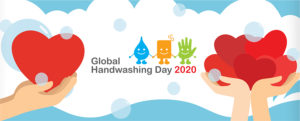Five Easy Steps To Excellent Hand Hygiene
Washing your hands frequently is one of the best ways to keep bugs at bay, protecting you and your family from getting sick. Knowing when to wash your hands and how to do it properly is important, and so is having a solution for times when water and soap aren’t readily available.
When should I wash my hands?
Forming good handwashing habits is easy when you are aware of the moments when your hands need to be clean to avoid spreading germs. Sometimes this is before an activity, other times it’s immediately after, and occasionally it’s both. A few examples are:
- Before and after preparing food
- Before and after enjoying a meal
- After blowing your nose, coughing, or sneezing
- After touching pets
- After using the bathroom
- After handling garbage
Correct technique for washing hands
The COVID-19 pandemic has taught us that for hand-washing to be effective, we should scrub with soap and water for around 20 seconds, taking time to get into all the corners and creases. Scientific studies show that this length of time will ensure all germs are removed, as well as dirt and chemicals.
Step 1: Wet your hands with clean running water – this can be warm or cold. Turn the tap off and apply soap.
Step 2: Rub your hands together, paying attention to the areas that are usually missed when you’re in a rush: the backs of your hands, between your fingers, and under your nails.
Step 3: Keep this sudsy scrubbing going for 20 seconds. Some people sing Happy Birthday twice to keep track of the time, or you could simply count.
Step 4: Turn the water back on, and thoroughly rinse the soap from your hands.
Step 5: Dry your hands completely using a cloth or paper towel, or allow them to dry in the air.
What if soap and clean running water aren’t available?
It’s still possible to keep your hands relatively germ-free when you’re out of the home or office, and without easy access to running water and soap. Health authorities recommend carrying a hand sanitizer with an alcohol content of 60% or more. It’s easy to find out if the hand sanitizer contains the right amount of active ingredients by simply looking at the label.
The reason hand sanitizer is considered secondary to a soap-and-water wash is that while the solution can quickly reduce the number of germs on the hands, it won’t be able to eliminate all types of nasties. Sanitiser is also not as effective when there’s visible dirt on the hands.
To use sanitizer effectively, simply squeeze a small amount into the palm of the hand. Each product is different, so check the label to confirm the correct amount. Rub your hands together, making sure the gel product covers the surface of the skin. Just like a soap-and-water hand wash, this should take around 20 seconds.








 Email: info@cyber-gear.com
Email: info@cyber-gear.com